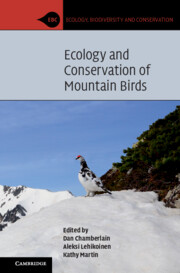Paleoecological studies from Rocky Mountain (USA) high elevations encompassing the previous interglacial (MIS 5e) are rare. The ~10-m composite profile from the Ziegler Reservoir fossil site (2705 m asl) of central Colorado allows us to determine paleoenvironments from Marine Oxygen Isotope Stages (MIS) 6– 4 using pollen zones that are approximately equivalent to marine oxygen isotope stages. During Pollen Zone (PZ) 6 time, pollen assemblages dominated by Artemisia (sagebrush) suggest that alpine tundra or steppe occurred nearby. The transition to PZ 5e was characterized by a rapid increase in tree pollen, initially Picea (spruce) and Pinus (pine) but also Quercus (oak) and Pseudotsuga menziesii (Douglas-fir). Non-arboreal pollen (NAP) types increased during PZ 5d, while Abies (fir) and Juniperus (juniper) increased during PZ 5c. Pollen evidence suggests that temperatures during PZ 5b were as cold as during PZ 6, with the site again surrounded by alpine tundra. Picea dominated during PZ 5a before the onset of cooler conditions during PZ 4. The MIS 6–MIS 5e transition here was similar to the MIS 2–MIS 1 transition at other Rocky Mountain sites. However, the Ziegler Reservoir pollen record contains evidence suggesting unexpected climatic trends at this site, including a warmer-than-expected MIS 5d and cooler-than-expected MIS 5b.
